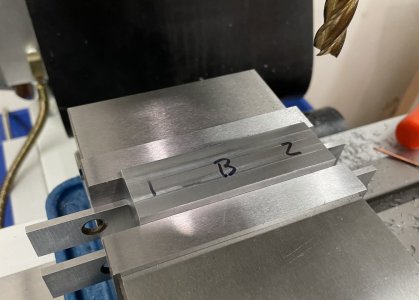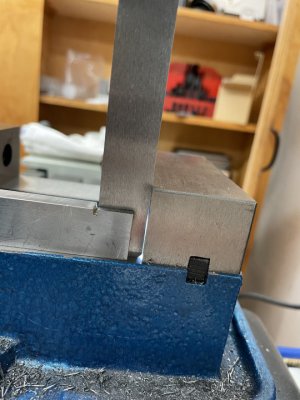- Joined
- Jan 25, 2022
- Messages
- 110
I was machining a piece of big box mystery metal square using parallel bars. I noticed that when I tightened the vise the parallel bar on the fixed jaw would become loose, and I couldn't tap it down onto the parallel. I finished the job anyway and noted that there were lines where the end mill overlapped. Barely sensible but there.
Putting the work piece back in the vise, I found that as I tightened the vise the edge of the work piece against the fixed jaw would rise up off the parallel. Loosening the vise, I could feel and hear the piece drop back down onto the parallel. It didn't matter which way I flipped the work, or if using a soft rod on the moving jaw.
Everything on the vise seems to check out, except that the fixed jaw base is tilted forward toward the work piece.
I can easily shim the jaw make it square but I wonder if this is intentional, or a mistake?


Putting the work piece back in the vise, I found that as I tightened the vise the edge of the work piece against the fixed jaw would rise up off the parallel. Loosening the vise, I could feel and hear the piece drop back down onto the parallel. It didn't matter which way I flipped the work, or if using a soft rod on the moving jaw.
Everything on the vise seems to check out, except that the fixed jaw base is tilted forward toward the work piece.
I can easily shim the jaw make it square but I wonder if this is intentional, or a mistake?



